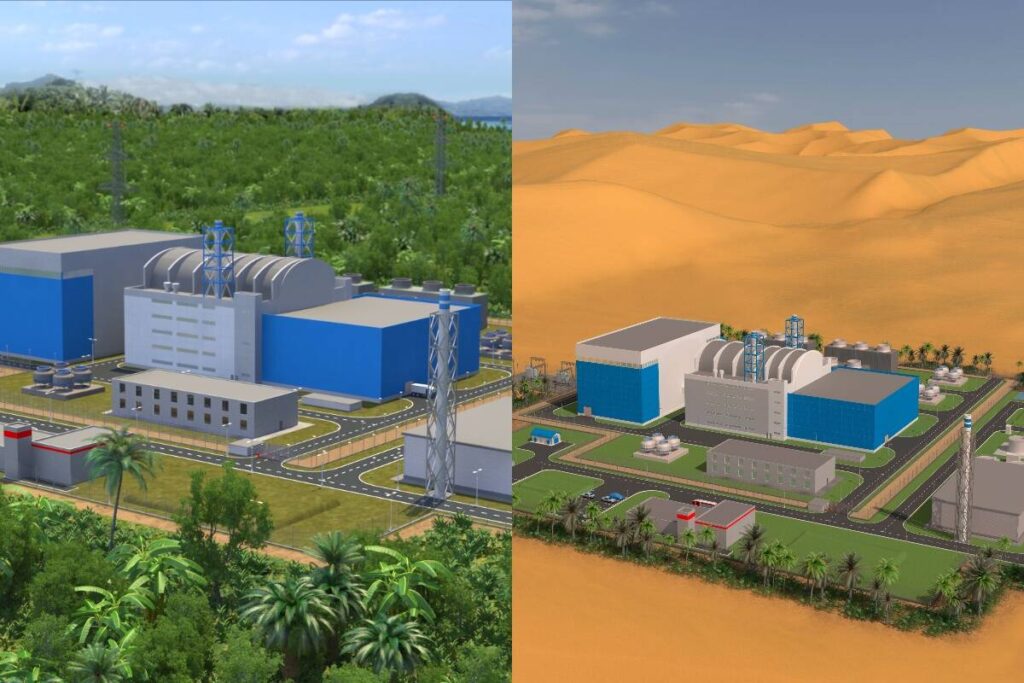In recent days, there is a steady increase of interest and optimism in small modular reactors (SMRs) worldwide because they are a step ahead from the existing world of nuclear power technology. The SMR is relatively a nascent concept, but they can make nuclear energy more scalable and flexible in terms of reliable energy supply, enhanced safety performance, better upfront capital cost, and suitability for cogeneration and non-electric applications. It is projected that “up to 21GW of SMRs could be added globally by 2035, making up approximately 3% of total installed nuclear capacity.” According to the International Atomic Energy Agency (IAEA), more than 70 SMR concepts are currently under development in 18 countries. Meanwhile, the global market for SMRs is expected to be $300 billion a year by 2040.

The SMRs are nuclear reactors capable of producing power output between 10 to 300 MWe only. Their modular design and small size allow them to have multiple units on the same site as per the demand. Their diversity and simplicity of design allows them to build them in locations not traditionally suitable for nuclear power plants. Other advantages of SMRs vis-à-vis the traditional reactors are: economy of series production, short construction times, and reduced siting costs. Most are also designed with high-level inbuilt safety-security features to address malfunction or sabotage. Therefore, they are capable of meeting the need for flexible power generation for a wider range of users and applications, and can replace ageing fossil fuel-fired power units.
Besides, SMRs make possible for synergetic hybrid energy systems that combine nuclear and alternative energy sources, including renewables. They are smaller than traditional reactors but are complementary, not competing technologies. While large reactors produce huge amounts of reliable, low-cost, low-carbon electricity, the SMRs can widen the range of useful nuclear applications. They “could be used in conjunction with other systems to address non-energy needs, such as providing thermal energy for desalination plants, industrial process heat, or for district heating systems. These non-electric functions are not available from most conventional renewable resources and could help developing nations meet other sustainable development goals (SDGs)….”
According to the World Nuclear Association, “We are at the dawn of a new era in nuclear technology” as SMRs would help supply electricity to hard-to-reach regions, as well as serve smaller grids and industrial centres; in essence, SMRs are harbingers of the goal of ‘atom for people’. Undoubtedly, the SMRs are among the most promising emerging technologies in the nuclear energy sector. As a result, a series of policy initiatives have been announced worldwide signaling growing support for SMRs.
Wider deployment of SMRs is expected to begin over the next decade, but Russia has been a pioneer in this domain. Two barge-mounted reactor units of KLT-40S design, onboard the Akademik Lomonosov, are already in operation in the Arctic city of Russia. It became the world’s first, and northernmost, floating SMR to enter commercial operation in remote Pevek city (Chukotka region) in May 2020. The reactors are efficiently catering both heat and electricity to the remote region, meanwhile facilitating the shutdown of the coal-fired Chaunsk power plant. Russia is also developing a land based SMR project planned for commissioning in 2028.
Two other SMR aspirants, Argentina and China, are due to begin operation within the next few years. Similarly, the US, UK, and Canada have also signaled growing support for SMRs last year. India, which aspires to play a bigger role in the nuclear energy market, has planned SMRs as the main pillars of its indigenous nuclear programme since its inception. Its indigenous reactor program has been mainly based on SMRs like the PHWRs, PFBR and FBRs, AHWR-300, etc. Only it has to properly formulate the design and deployment strategy to barge into the SMR era. Given New Delhi’s time-tested nuclear cooperation with Moscow, it would be prudent for India to kick its collaboration to a futuristic level by drawing a roadmap for SMR joint-venture with Russia.
The rationale for opting SMRs by India is strong. First, to scale up its nuclear energy component in its energy-basket smartly, SMRs would help as they can address all critical issues involved with traditional reactors. Second, many remote places like northern and eastern hilly regions, farthest places like Andaman & Nicobar Islands, that are deprived of grid connectivity, will benefit from the SMRs. Third, as India is planning to diversify the operational and management responsibilities of nuclear plants among other PSUs and government sector companies, SMRs would be the ideal projects. Lastly, in today’s carbon-constrained world, to meet Net-Zero Emission targets prescribed under SDGs, India must appreciate the ecological aspects of nuclear energy, and pay serious attention to SMRs’ utility in its energy transition.
(The author is Associate Professor, School of Liberal Studies (SLS), Pandit Deendayal Energy University (PDEU), Gujarat. Views expressed are personal and do not reflect the official position or policy of the Financial Express Online.)
